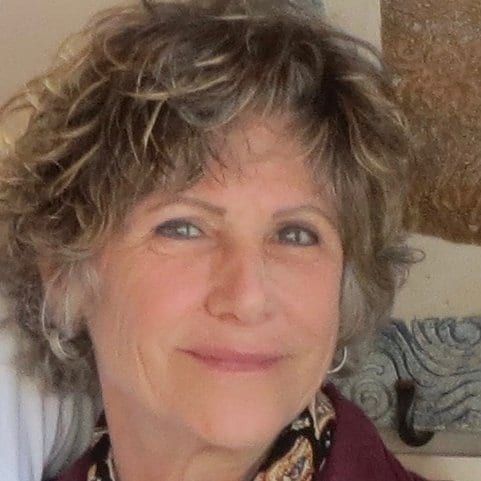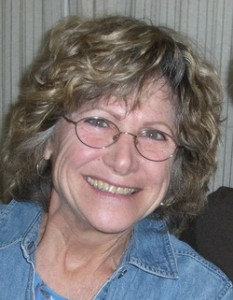
Dr. Lyn Prashant is a certified grief counselor with over 24 years’ experience in the field. Her training in bereavement counseling and her knowledge of somatic health care practices (she is a certified yoga instructor, massage therapist and physical education teacher) has led her to develop a unique and successful approach to grief counseling called “degriefing”.
Lyn’s practices are a unique and fascinating approach to wellness and grief support. I had the chance to speak with Lyn for an introduction to her work in the field.
Dana: For our readers who might be unfamiliar, can you give us a brief overview of what you do?
Lyn: Here’s what I do: I meet each person where they’re at. I ask skillful questions. I listen to their answers, and I normalize what’s going on.
Dana: What do you mean by ‘normalize’?
Lyn: Normalizing is a process of bottom-lining and responding with information that gives the grieving individual an opportunity to observe themselves, to compass with education and with what some would call “companioning” — serving and embracing. It’s letting people know that their experiences aren’t abnormal.
This little piece is important: Grief accumulates in our bodies. We have to be able to express the grief rather than repress the grief. I use active listening because grief scatters and shatters linear thinking. Greiving people need to be heard and met where they’re at.
Dana: In the video, you say: “At times of grief and loss, our minds are not our friend. Trust your heart.” Can you explain what you mean by that?
Lyn: Grief scatters and shatters linear thinking. It’s an experience that is built into the human condition. Anything we love or attach to — my mom, boyfriend — that we lose, that we invest our love energy in, will promote grief. There are degrees of grief. For example, for me, losing my sister is way bigger than losing my bracelet — but it’s all grief. The mind searches for relationship to loss. Fresh grief re-stimulates old loss. Every loss has a primary and many secondaries, and this can lead to bereavement overload, which means the person will be affected by many past losses that are stimulated by one at the time. These are called “STUGs” — Sudden Temporal Upsurges of Grief.
When we’re dealing with something like this, the mind tries to make rational statements about a process that is so physically impacting that we can’t think straight.
Dana: So what you do is to address those physical effects?
 Lyn: What we do in the field of thanatology (relating to death and dying) is normalize these experiences for people, and I try to find where they feel the grief in their body.
Lyn: What we do in the field of thanatology (relating to death and dying) is normalize these experiences for people, and I try to find where they feel the grief in their body.
There’s a shift in the field, and we’re recognizing that death is, of course, many people’s ultimate fear (their own death and loss of others). What we’re doing is normalizing for them that losses are varied and each person has their own relationship to what they cherish. We take away a hierarchy. It’s not a given that the death of somebody’s parent is more painful than the death of a cat. It’s based on their value system.
Dana: So, before this shift, did you see elements lacking in your training for traditional grief counseling?
Lyn: Absolutely. I practice “somatic” thanatology. We pay as much attention to what’s going on in the person’s body as in the mind, because the body doesn’t know how to lie. No matter what your mind tells yourself about being okay, the heart isn’t going to stop aching, even when we try to say we’re just fine.
People are so under-educated about the nature of grief, we need to point out the feelings of grief that have physical effects. You have to take your grief and personally determine how to make meaning of this grief.
Dana: So, traditionally the field has dealt with the mind, but you’re saying that that means we’re dealing with lies.
Lyn: Yes. That doesn’t deal with, say, the ache in the belly. Where does the ache go? The mind goes crazy and it makes up stories, but the physical effects don’t go away. I can never tell them that I know how they’re feeling. In grief [counseling], we’re looking for the questions, not the answers.
Dana: What do you mean by that?
Lyn: Instead of “Why do I feel like this?” we rephrase this. “Why” doesn’t help you regain strength. We ask, “What is going on? What can I learn about this? And what is this?” Is it guilt, is it rage, etc.
Dana: Do you think traditional counseling was focused on the why?
Lyn: I am personally moving away from that. We have things called “somatic colloquialisms,” what some refer to as metaphors. If somebody said to me, “Every time I see this picture I feel like there’s a knife in my back.” I ask, “What is that feeling?” to get to the root of that physical feeling and the grief.
You have to tend to the body. For example, I don’t hand a newly-grieving person something to read, because they’re eyes are swollen and puffy.
Dana: So you’re searching for a connection between the physical and mental feelings of grief?
Lyn: Yes. We call it mind, body, spirit. We try to find, what can you do to live with this pain and transform it?
Dana: Because, as you mention in the video, there’s no end to grief — so you want to transform it to something positive?
Lyn: Well — into something workable. When somebody’s grieving, they don’t want to hear “positive.” They can hear “workable.”
Dana: Can you offer some starter tips for individuals who want to incorporate degriefing and self-care into their personal healing process?
Lyn: We offer some quick tips:
- Tell your story
- Run your hands under cold water
- Nostril breathe to relax
- Allow your body to cry
- Sing and dance
- Whatever your body needs to transform the grief into something meaningful and workable.
We always start with a degriefing timeline. Remember, fresh loss re-stimulates prior loss. We go fishing for what could build to bereavement overload. I ask, “What are the five most painful losses that come to mind?” Think about what losses and grief a fresh loss might be conjuring up.
—
Thank you, Lyn for taking the time to introduce us to this complex topic. We’ve just scratched the surface, so we’ll certainly be revisiting the topic in the future. For more information, Lyn offers these resources on grief, loss, and degriefing:
- Full Catastrophe Living, by Jon Kabat-Zinn, about Mindfulness Based Stress Reduction
- Therese A. Rando – STUGs concept
- Who Dies? by Stephen Levine
- Wheel of Life, and many other works by Elisabeth Kubler-Ross
- Molecules of Emotion, by Candace Pert
- New Techniques in Grief Therapy: Creative Practices for Counseling the Bereaved, edited by Dr. Robert A Neimeyer
- Degriefing: The Art of Transforming Grief with Integrative Therapies — the training manual for Hands on Degriefing bodywork training.
- OpentoHope.com – Online foundation to serve grieving individuals
- Yoga Nidra: The Meditative Heart of Yoga, by Richard Miller
- Integrative Restoration (iRest)
Download a full list of resources from Lyn’s website here.

 What is degriefing? An Interview with Lyn Prashant
What is degriefing? An Interview with Lyn Prashant


 “As Tears Go By” by Marianne Faithfull
“As Tears Go By” by Marianne Faithfull

 Funeral Favors Offer Visitors a Tangible Memento
Funeral Favors Offer Visitors a Tangible Memento















